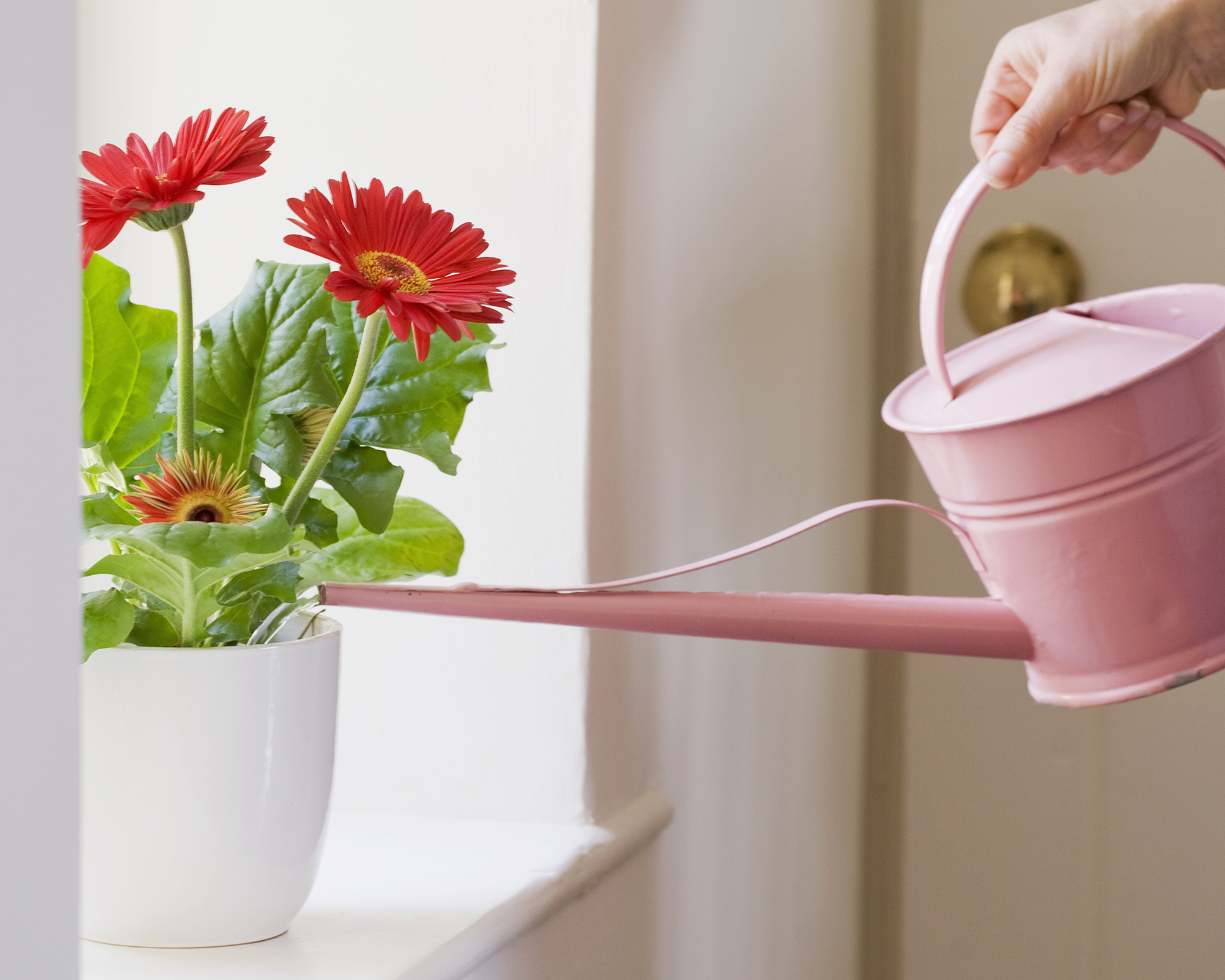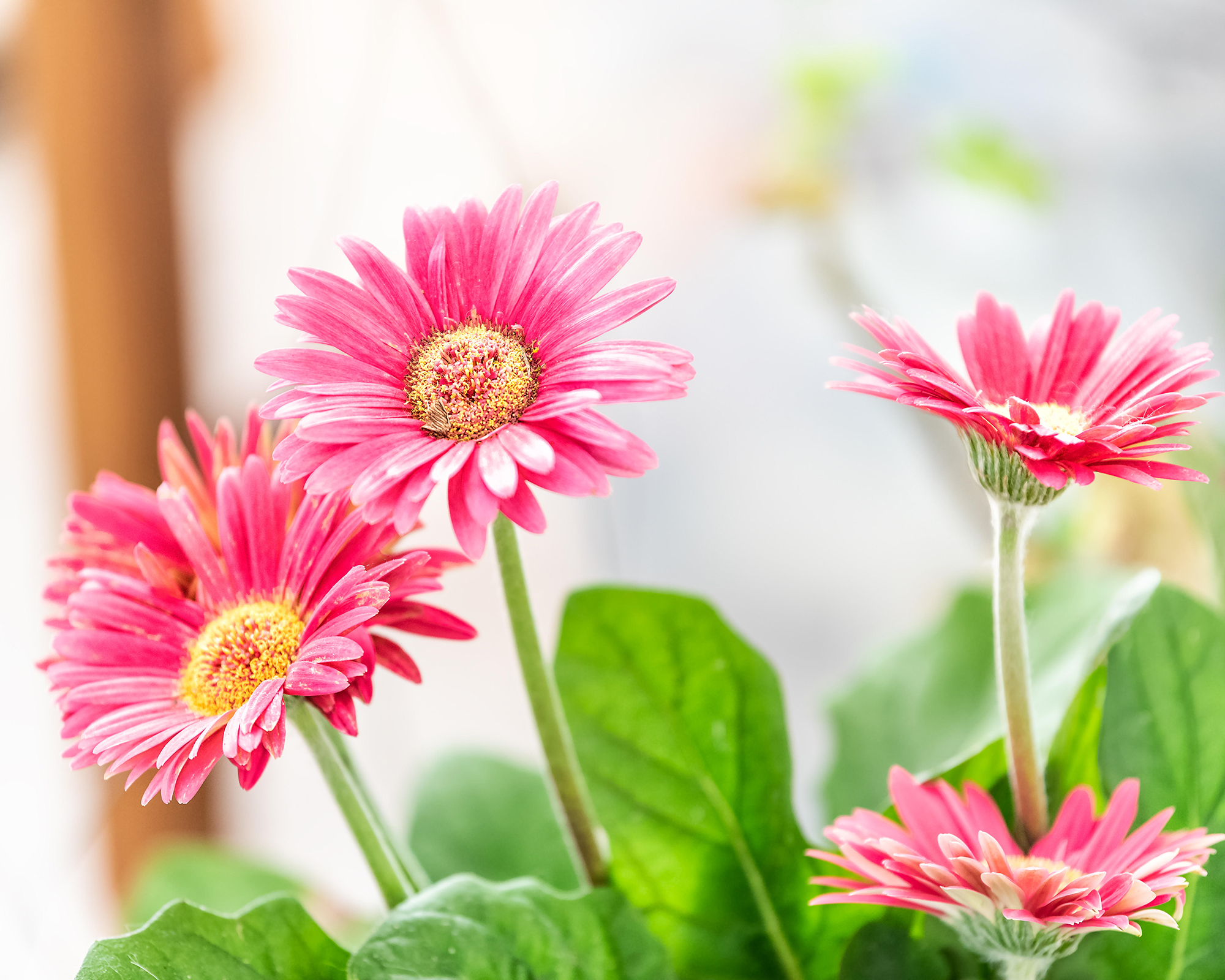Gerbera Daisy Indoor Care: Complete Growing Guide
With their bright, showy flowers, gerbera daisies make popular houseplants. Learn how to care for them effectively – and how to tackle common growing issues.

Growing gerbera daisies is an appealing pastime for indoor and outdoor gardeners alike. The plants are prized for their vibrant, daisy-like flowers, which come in a range of colors and sizes. Though they can be grown successfully as houseplants, gerbera daisy indoor care is a little tricky.
The plants, often given as gifts, are usually grown for a single blooming season before being discarded. However, if you can provide the right growing conditions, your gerbera daisy may survive for two or three years.
Although the plants can be kept as houseplants year round, you can opt to overwinter gerbera daisies indoors and allow them to spend the warmer months in containers outside. This gives the best of both worlds.
Gerbera Daisy Indoor Care Requirements
For effective gerbera daisy care indoors, gardeners will need to consider several key factors related to the plant’s cultural requirements.
This will help to make certain that containers remain lush and healthy throughout even the coldest months of the year.
Light
Gerbera daisies require an unusual combination of bright light and moderate temperatures.
A spot on a sunny windowsill may be too hot and can scorch the leaves. But without adequate light, the plant won't produce blooms. Ideally position your plant near a sunny window, with ample indirect light.
Sign up for the Gardening Know How newsletter today and receive a free copy of our e-book "How to Grow Delicious Tomatoes".
During the winter, it may be necessary to supplement light levels with a grow light.

Water
Frequent watering is key to effective gerbera daisy indoor plant care. During periods of active growth, gardeners can expect to water pots approximately 1-2 times per week.
Between waterings, potted soil should be allowed to dry, but only slightly.
Water the plant deeply whenever the top inch (2.5cm) of soil feels dry to the touch. Let the pot drain thoroughly before replacing it on the saucer or drip tray, as the plant is likely to rot in soggy soil.
Water carefully and keep the leaves as dry as possible.
The arrival of shorter days and cooler temperature will often yield a notable decrease in watering throughout the duration of the winter months.
Temperature & Humidity
Gerbera daisies will perform best where temperatures are moderate, between 40-70°F (4-21°C).
Plants grown outdoors are considered tender, and will need to be moved inside before the first frost in autumn.
Year-round indoor plants will also be influenced by consistent temperatures, playing a role in the plant’s ability to produce buds.
Consistent humidity will be appreciated, with plants benefiting from routine misting throughout the driest parts of the year.
Soil
Though gerbera daisies will grow best in soils that are slightly acidic, most indoor specimens will perform well when placed into a high-quality potting mix.
Growers should make certain to choose containers with only exceptional drainage, as the plants will not tolerate excessively wet or waterlogged soils.
Fertilizer
Gerberas are heavy feeders, and routine feeding will help to maintain soil nutrient levels within containers. This will be of special importance throughout the spring and through the plant’s period of flower production.
A well-balanced, granular fertilizer is most often suggested at planting time. The use of a water-soluble bloom booster is then recommended, in accordance with the manufacturer’s labeled instructions, until the formation of the plant’s first buds.

How to Grow Gerbera Daisies Indoors From Seed
Most who choose to grow their own gerbera daisies purchase small transplants, as growing the flower from seed can be difficult. Still, those hoping to do so can sow seeds indoors, approximately 8-12 weeks before the last frost date in spring.
Seed starting trays should be filled with a high-quality, soilless potting mix. New plantings should be kept moist and at consistently warm temperatures, about 70°F (21°C).
Clear humidity domes, or those designed for propagation and seed starting, will be especially helpful in maintaining ideal moisture levels.
Under proper conditions, seeds should begin to germinate within 2-3 weeks.
Propagation
Aside from growing the plant from seed, gerbera daisies can be propagated in a variety of ways. The removal of side shoots from established plants is most common.
After each daisy has been lifted from the soil, new plants can be shaken gently from the root mass. Side segments can then be potted into their own containers or replanted into flower beds.
Daisies may also be propagated from cuttings, rooting in as little as a week.
Pruning
Gerbera daisy plants only seldom require pruning. However, deadheading will be beneficial. The removal of faded flowers from the plant will prevent the production of seed and help to divert energy into new growth.
Parts of the plant that have been damaged or that have died back can be pruned away in order to better maintain plant health.
Repotting
Experienced growers suggest repotting gerberas annually. Large specimens that have outgrown their containers will benefit most from transplant.
New pots should be at least 2 inches (5cm) larger in diameter than the plant’s root ball.
Containers should drain well and be filled with a nutrient-rich potting mix.

Problems, Pests & Diseases
Though generally easy to grow, gerbera daisies may be affected by disease. Fungal issues, like botrytis, are most common. Powdery mildew, crown rot, root rot, and fusarium can also occur indoors; more specifically, in containers with poor drainage.
Early detection of such diseases can help growers to identify infections and better control their spread.
Insects such as aphids, spider mites, and thrips may also cause damage to indoor plants.
Frequently Asked Questions
How long do gerbera daisies last inside?
Gerbera daisies can be kept year-round as houseplants, with a potential lifespan of two to three years.
Most growers first purchase their plants in the spring. These daisies are likely to bloom quickly, as the buds are already established.
After they have finished blooming, the plants will maintain their lush appearance, which adds to their appeal for growing indoors.
How do you keep potted gerbera daisies blooming?
Keeping gerbera daisies blooming indoors can be difficult. However, consistent temperatures and frequent fertilization can assist growers in achieving this feat.
Routine feeding will be especially important for potted gerberas, as nutrient deficiencies may lead to an increase in plant stress and an overall decline in health.
Water-soluble feeds are most recommended throughout the spring and summer.

A Credentialed Garden Writer, Mary H. Dyer was with Gardening Know How in the very beginning, publishing articles as early as 2007.

